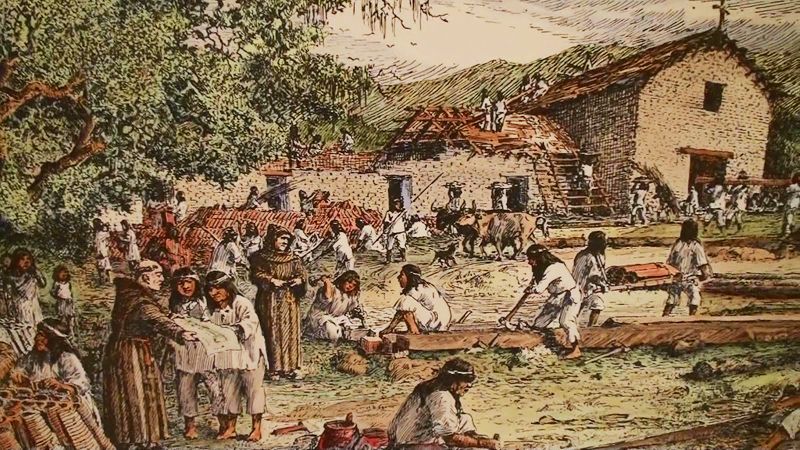What We Review
Comparison in Period 2 — Colonial Society in North America (AP® US History Study Guide)
Introduction
Period 2 in AP® US History (1607–1754) covers a time when European powers were busy building colonies across North America. During this era, England, Spain, France, and the Netherlands each tried to claim land, resources, and influence. However, each region developed in unique ways, influenced by factors like climate, geography, and the goals of their home countries—making comparison between colonial regions an important part of understanding this period.
Comparing how these colonial societies grew helps explain the roots of social, political, and economic differences that shaped later American history. Therefore, understanding how and why colonial society development varied in North America is a key AP® US History skill.
Imperial Goals and Colonization Patterns
Overview of European Colonizers
European powers approached colonization with different motivations:
- Spanish: Sought wealth, Christian conversions, and empire expansion.
- French: Focused on trade (especially fur), limited settlement, and alliances with Native Americans.
- Dutch: Created trading posts and focused on profit.
- British: Colonized for religious freedom, profit, and new opportunities.
These imperial goals shaped how and where settlers built colonies.
Example: Spanish Missions vs. British Plantations
- Spanish: Built missions in California to convert Native Americans, often creating centralized communities.
- British: Built plantations in the South, using enslaved labor and spreading out across fertile land.

How Imperial Goals Shaped Colonial Development
European powers established colonies in the Americas with distinct imperial goals, and these objectives—combined with geographic and environmental factors—profoundly shaped the political, economic, and social structures of each colony.
- Spain aimed to extract wealth and spread Catholicism. In regions like California and the American Southwest, Spain established mission systems—religious and agricultural settlements designed to convert Indigenous populations and integrate them into Spanish colonial society. The colony’s layout centered around the church, and labor was often coerced or forced.
- Britain, especially in the Southern colonies, focused on economic profit through the production of cash crops like tobacco, rice, and indigo. The fertile soil and long growing seasons of the Chesapeake and Lower South supported large plantations that relied on enslaved African labor. These colonies developed around private land ownership, agricultural wealth, and rigid racial hierarchies.
By analyzing these patterns, it becomes clear that imperial motives—whether spiritual, economic, or strategic—interacted with environmental realities to produce distinctive colonial societies. Spanish colonies revolved around religious institutions and imperial control, while British colonies, especially in the South, developed around private wealth, plantation agriculture, and race-based slavery.
Regional Differences in British Colonies
The Three British Colonial Regions
Britain’s Atlantic coast colonies developed differently:
1. New England Colonies (e.g., Massachusetts, Connecticut)
- Cold winters, rocky soil.
- Small farms, fishing, trading.
- Town meetings and Puritan communities.
2. Middle Colonies (e.g., New York, Pennsylvania)
- Milder climate, fertile soil.
- Diverse economy: farming, trade, and manufacturing.
- More religious and ethnic diversity.
3. Southern Colonies (e.g., Virginia, South Carolina)
- Warm weather, rich soil.
- Large plantations growing cash crops (tobacco, rice).
- Reliance on enslaved labor.
Town Meetings vs. Plantation Systems
- New England: Town meetings allowed local white male citizens to make decisions directly, fostering democracy.
- Southern Colonies: Plantation owners held most of the power, creating an elite society.
Geography and Society
- Geography: New England’s small farms required cooperation; the South’s large plantations favored individual landowners.
- Economy: New Englanders needed to work together, leading to more local government; Southerners focused on cash crops, with power in the hands of few.
- Outcome: Regional differences in environment shaped local government and social structures.
Interactions and Conflict: Europeans and Native Americans
Competition and Conflict
As colonists and Native Americans fought for land and resources, alliances and disputes shaped colonial society:
- European nations often allied with certain Native tribes for trade or against rivals.
- Settlement expansion led to conflict and sometimes violence.
French Fur Trade Alliances vs. British Land Conflicts
Colonial relationships with Native Americans varied widely depending on imperial goals and the resources colonizers sought to control. A comparison between French and British strategies reveals how resource competition shaped Native-European relations.
- The French prioritized the fur trade, especially in the interior regions of North America. To access furs, they formed mutually beneficial alliances with Indigenous groups such as the Huron Confederacy. These alliances were based on reciprocal trade, diplomacy, and intermarriage, allowing the French to maintain relatively peaceful relations and extend their influence without large-scale settlement.
- In contrast, the British sought to expand agricultural settlements, particularly along the Atlantic coast and into the interior. This goal required land acquisition, often at the expense of Native communities. As settlers encroached on Native territory, conflict became frequent—such as with the Powhatan Confederacy in Virginia or later with the Wampanoag during King Philip’s War.
Key Insight: How Resource Priorities Shaped Native Relations
- French goals centered on trade and diplomacy → Cooperative relationships and strategic alliances with tribes.
- British goals focused on land acquisition and long-term settlement → Displacement, violent conflict, and wars of resistance.
This comparison demonstrates that colonial priorities—fur vs. farmland—determined the nature of European-Native interaction. While the French often maintained trade-based coexistence, British colonists’ relentless push for land led to escalating tensions, warfare, and dispossession.
Transatlantic Exchanges and Colonial Society
Nature of Transatlantic Exchanges
The colonies were not isolated; they traded goods, ideas, and people across the Atlantic. This led to:
- The spread of religious and political ideas.
- Colonial attitudes toward Britain sometimes encouraged loyalty and sometimes led to resistance.
The Great Awakening’s Impact on Colonial Society and Politics
The Great Awakening, a widespread religious revival that swept through the British American colonies in the 1730s and 1740s, reshaped colonial life by challenging traditional religious and political authority. Evangelical ministers like George Whitefield and Jonathan Edwards emphasized personal salvation, emotional expression, and the idea that all individuals could experience a direct relationship with God—regardless of social status.
How the Great Awakening Shaped Colonial Attitudes
- Message and Method: Traveling preachers ignored traditional denominational hierarchies and delivered passionate sermons in open-air revivals, reaching a broad audience across class, gender, and regional lines.
- Response and Impact: Many colonists began to question not just the authority of established churches, but also civil institutions that mirrored hierarchical religious structures.
- Political Consequence: The revival fostered ideas of individual moral authority and equality before God, which later translated into a willingness to challenge political authority—especially British rule—during the Revolutionary era.
Key Insight: Transatlantic religious movements like the Great Awakening planted ideological seeds for revolution.
By encouraging spiritual independence and challenging elite control, the movement helped democratize religious life and primed colonists to resist imperial power on similar moral and philosophical grounds.
The Atlantic Slave Trade and Slavery in the Colonies
Role of Slavery and Regional Differences
- All British colonies used enslaved labor, but the types of slavery differed by region.
- Southern colonies developed large plantation systems; Northern and Middle colonies used enslaved people in households and ships.
Example: Comparing Slavery in the Chesapeake and South Carolina
The institution of slavery developed differently across British colonial regions, shaped by distinct economic demands, environmental factors, and social dynamics.
Chesapeake Colonies (Virginia and Maryland):
These colonies focused primarily on tobacco cultivation. Medium-sized plantations and a mix of indentured servants and enslaved Africans characterized the early labor system. Over time, the use of African slavery became dominant, but the population of enslaved people remained more balanced with the free population. Because of this demographic mix, enslaved Africans in the Chesapeake were more likely to form family-based communities and maintain some cultural continuity, despite the oppressive conditions.
South Carolina:
In contrast, South Carolina’s economy centered on rice and indigo—crops that required intense labor and large-scale organization. The colony quickly developed a reliance on enslaved Africans, who made up the majority of the population by the early 1700s. The labor system was more brutal, with longer hours in disease-prone swamps and less oversight from owners, many of whom lived elsewhere. Enslaved people in South Carolina were more isolated from white society but maintained stronger connections to African languages, customs, and religious traditions.
Key Comparison:
While both regions built plantation-based economies that depended on enslaved labor, the scale, intensity, and cultural impact of slavery in South Carolina were far more severe. The demographic dominance of enslaved people in South Carolina also created a distinct cultural and social environment, with greater African influence but also harsher repression to prevent resistance.
Quick Reference Vocabulary Chart
| Term | Definition |
| Imperial Goals | The aims and motivations of European empires in colonizing land, including wealth, power, and religion |
| Colonization Patterns | The different ways settlers established colonies based on culture, environment, and economy |
| Plantation System | Large agricultural estates found mainly in the South, reliant on slave labor |
| Town Meeting | A form of local government common in New England colonies |
| Atlantic Slave Trade | The forced migration of Africans to the Americas to work primarily on plantations |
| Great Awakening | A religious revival in the colonies that influenced social and cultural attitudes |
Conclusion
Comparing the development of colonial societies during Period 2 reveals that regional differences in colonization, environment, and imperial goals shaped every aspect of American life. These foundations influenced political systems, social structures, and attitudes toward Britain, setting the stage for later change. Therefore, knowing how and why colonies grew differently is vital for understanding US history.
To build a strong foundation for AP® US History success, use this study guide with document analysis and practice questions. Continually practice comparing examples from different regions, and look for patterns in how geography, economy, and culture affected society.
Sharpen Your Skills for AP® US History
Are you preparing for the AP® US History test? We’ve got you covered! Try our review articles designed to help you confidently tackle real-world AP® US History problems. You’ll find everything you need to succeed, from quick tips to detailed strategies. Start exploring now!
- AP® US History: 3.1 Review
- AP® US History: 3.2 Review
- AP® US History: 3.3 Review
Need help preparing for your AP® US History exam?
Albert has hundreds of AP® US History practice questions, free response, and full-length practice tests to try out.








